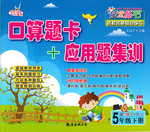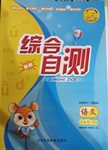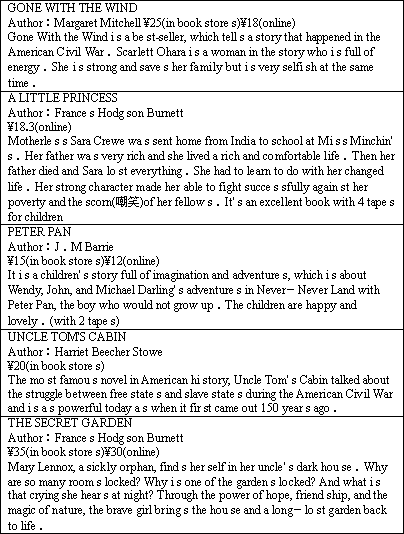题目内容
We ________the house empty.
- A.surprised at finding
- B.are surprised at finding
- C.surprised to find
- D.are surprising to find

 口算题卡加应用题集训系列答案
口算题卡加应用题集训系列答案 综合自测系列答案
综合自测系列答案
| |||||||||||||||||||||||||||||||||||||||||||||||||||||||||||||||||||||||||
Crosstalk(相声),a traditional form of comic storytelling,is making a comeback in China’s tea houses and theaters.
Audiences can laugh the night away every Saturday at the Qianxiangyi Teahouse in Tianjin,entertained by the apprentices(学徒)of Hou Baolin,Ma Sanli or Yin Shoushan—all leading crosstalk artists of years past—for only 20 yuan($2.40).
The success in Tianjin has also caused the rejuvenation(复活) of crosstalk in Beijing and other places.
Although the art form originated in Beijing in the Qing Dynasty(1644-1911),Tianjin became a place where rising stars formed their styles and new pieces were tried out.The city was well—known nationwide for the quality of its crosstalk performances.
Known in Chinese as xiangsheng(1iterally,“face and voice”),crosstalk was the predominant(支配的)form of comedy throughout most of the 20th century.In the old days in Tianjin and elsewhere,temple fairs and markets were the main places for crosstalkers to perform,although they occasionally also appeared in teahouses or theaters.
Crosstalk pieces draw on every aspect of Chinese culture,from history and folk tales to social issues of the time.Although there’re hundreds of traditional pieces,they’re constantly rewritten to suit the times and the audience, while new works are written as well.It’s one of the features that have made crosstalk a
public art form throughout its history.
“Crosstalk was in the doldrums(萎靡不振)with competition from other art forms,especially TV,”said Wang Xiaochun,headmaster of the Northern Storytelling Arts School of China(NSAS).“But it has regained its status with crosstalk fans,especially young people,growing aware of its rare qualities.”
“More and more students are coming to NSAS to study crosstalk,including some girl students,”said Wang, “They’re sure that crosstalk will have a strong market.”
【小题1】Crosstalk means“__________ ”in Chinese.
| A.storytelling | B.face and voice | C.folk tale | D.dialogue |
| A.it is constantly changed and renewed | B.it is often performed at temple fairs |
| C.it is different from other arts | D.it is comic and humourous |
| A.it is a popular traditional art after all |
| B.the pieces contain some famous folk tales |
| C.the crosstalkers make it return to teahouses |
| D.the pieces are made to suit the times and the audience |
| A.setting up more storytelling art schools | B.beating TV and other arts |
| C.young people’s awareness of its value | D.a strong market |
Crosstalk(相声),a traditional form of comic storytelling,is making a comeback in China’s tea houses and theaters.
Audiences can laugh the night away every Saturday at the Qianxiangyi Teahouse in Tianjin,entertained by the apprentices(学徒)of Hou Baolin,Ma Sanli or Yin Shoushan—all leading crosstalk artists of years past—for only 20 yuan($2.40).
The success in Tianjin has also caused the rejuvenation(复活) of crosstalk in Beijing and other places.
Although the art form originated in Beijing in the Qing Dynasty(1644-1911),Tianjin became a place where rising stars formed their styles and new pieces were tried out.The city was well—known nationwide for the quality of its crosstalk performances.
Known in Chinese as xiangsheng(1iterally,“face and voice”),crosstalk was the predominant(支配的)form of comedy throughout most of the 20th century.In the old days in Tianjin and elsewhere,temple fairs and markets were the main places for crosstalkers to perform,although they occasionally also appeared in teahouses or theaters.
Crosstalk pieces draw on every aspect of Chinese culture,from history and folk tales to social issues of the time.Although there’re hundreds of traditional pieces,they’re constantly rewritten to suit the times and the audience, while new works are written as well.It’s one of the features that have made crosstalk a
public art form throughout its history.
“Crosstalk was in the doldrums(萎靡不振)with competition from other art forms,especially TV,”said Wang Xiaochun,headmaster of the Northern Storytelling Arts School of China(NSAS).“But it has regained its status with crosstalk fans,especially young people,growing aware of its rare qualities.”
“More and more students are coming to NSAS to study crosstalk,including some girl students,”said Wang, “They’re sure that crosstalk will have a strong market.”
1.Crosstalk means“__________ ”in Chinese.
|
A.storytelling |
B.face and voice |
C.folk tale |
D.dialogue |
2.According to the text, crosstalk is so popular throughout its history because____________.
|
A.it is constantly changed and renewed |
B.it is often performed at temple fairs |
|
C.it is different from other arts |
D.it is comic and humourous |
3.Crosstalk makes a comeback mainly because__________.
|
A.it is a popular traditional art after all |
|
B.the pieces contain some famous folk tales |
|
C.the crosstalkers make it return to teahouses |
|
D.the pieces are made to suit the times and the audience |
4.We can learn that the future of crosstalk first lies in ____________.
|
A.setting up more storytelling art schools |
B.beating TV and other arts |
|
C.young people’s awareness of its value |
D.a strong market |
